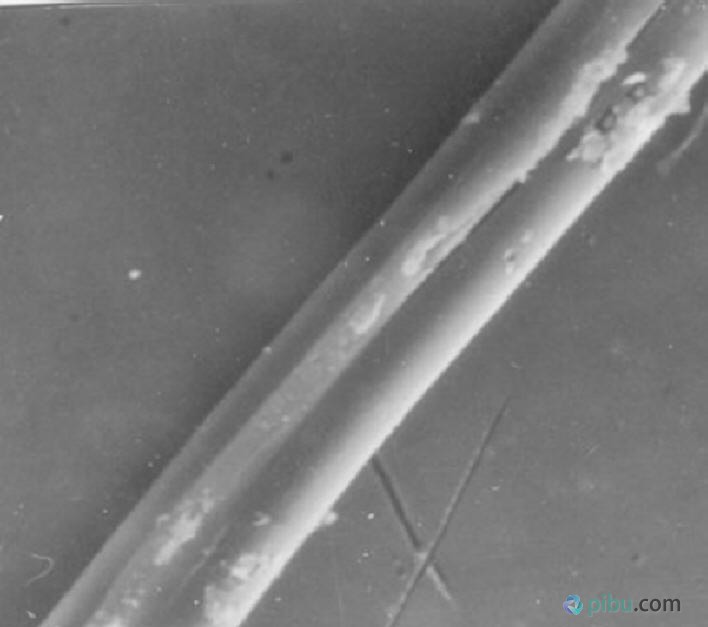Pique Fabric,Span Pique Poly,Jacquard Poly Pique,French Terry Pique Fabric SHAOXING LINGGE TEXTILE CO., LTD. , https://www.lingertex.com
Silk is filamentous fiber material that is formed by the secretion of silk glands and then solidified in the air. Silk was first produced in China, and the largest amounts currently are China and Japan. Silk is divided into silk and wild silk. Bombyx mori mulberry leaves for feed, also known as mulberry silk, mulberry silk re-textile material called silk. The main representative of wild silk is tussah silk, which is spit from silkworms that have been placed on maple trees in the wild. It is one of the major specialties in China and has been used by foreign countries as “Chinese tussah silkâ€.
The composition and morphology of silk
1. The composition of silk
Silk is composed of silk fibroin and sericin, and they are all proteins. Fibroin is insoluble in water, and its content accounts for 70% ~ 80% of silk; sericin content accounts for 20% ~ 30%. It can be dissolved in hot water, alkaline liquid and insoluble in cold water. Therefore, there are a small amount of pigments, ash, waxes, carbohydrates, and the like.
2. Morphological structure of silk
Each silk yarn is composed of two silk fibroin topcoated sericin, and the single silk fibroin after sericin removal has an irregular triangle cross-section; it is longitudinally smooth and glossy. Because of the linear density and strength, single strands of silk cannot meet the requirements for processing and use. The strands separated from the silkworm cocoon must be combined to form raw silk, and the raw silk is then stripped of sericin to form a soft and glossy ripe silk. Can be used for weaving processing. 

The main characteristics of silk
The silk feels soft and comfortable, and the gloss is elegant and pleasing; the fibers are hygroscopic and comfortable to wear; they have good coloring and vivid colors. The unsilked silk of the mulberry silk is white or light yellow, and the color is white after degumming and bleaching. Wild silk is brown, yellow, orange, and green when it is not degummed, and it is generally pale yellow after degumming. Like wool, silk cannot be treated with chlorine-containing bleach, and alkaline detergents should be avoided during washing. Silk is resistant to weak acids and weak bases, and has lower acid resistance than wool and slightly stronger alkaline wool. The silk is not resistant to salt water erosion, and the salt in the industry can reduce the strength of silk, so the summer silk clothing should be changed frequently. Silk fabrics that are treated with acetic acid will become softer, feel softer and smoother, and have a better gloss. Therefore, when washing silk garments, a small amount of white vinegar may be added in the final clean water to improve the appearance and feel. Silks are poor in lightfastness, and excessive sunlight causes the fibers to yellow and become brittle, so silk garments should be dried after washing. The ironing temperature of silk is 160 ~ 180°C. It is best to use a steam iron for ironing. It is generally necessary to pad cloth to prevent the appearance of hot yellow and water stains. Silkworms are susceptible to mold and insects, and white silk is yellowish due to long storage times. When the silk rubs each other, it will produce a special slight sound, which is the unique silky phenomenon of the silk fabric.
The difference between mulberry silk and tussah silk
Whether it is mulberry silk or tussah silk, natural fibers have better strength and elongation and can be used to fabricate high-grade fabrics. The mulberry silk is straight and smooth in the longitudinal direction, with an approximately triangular cross-section, white color, and good gloss. The amount of silk is the largest and the variety is the most. The lustre of tussah silk is not as bright as mulberry silk, and its hand feel is not as smooth as mulberry silk, and it is slightly rough. In addition, tussah silk contains natural yellowish pigments that are not easily removed. However, the properties of tussah silk, such as fastness, hygroscopicity, heat resistance, chemical resistance, etc., are all good, and tussah silk has good strength and elongation. In natural fibers, the strength of tussah silk is only in hemp, and the elongation is second only to wool. Tussil silk has a wet strength of 4% greater than dry strength and good water resistance, and is suitable for special applications where water resistance is strong. The tussah silk has better acid and alkali resistance than mulberry silk. The hygroscopicity of tussah silk is larger than that of mulberry silk. When the relative humidity is 70%, the moisture regain of tussah silk is 11.6%, and the moisture regain of mulberry silk is 10.7%. In sun exposure, the strength and elongation of tussah are reduced, but the reduction of mulberry silk is low. The silk has the advantages of wearing a prison, light, elasticity, slippery, and other advantages, and it has a considerable position in China's silk fabrics. It can produce male and female suits, suits, shirts, women's dresses, acid-resistant suits, and live work. Press service. However, its surface roughness, roughness more, poor color absorption ability, so the application of textile fabrics and fabrics are not as good as silk appearance, its value is inferior.
For more information, please pay attention to China bubu.com
Natural fiber detailed silk articles silk basic characteristics and morphology structure
The source of silk